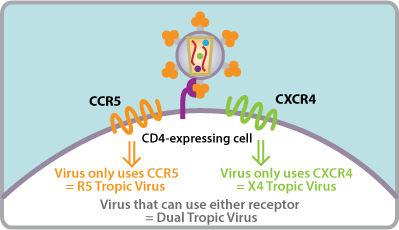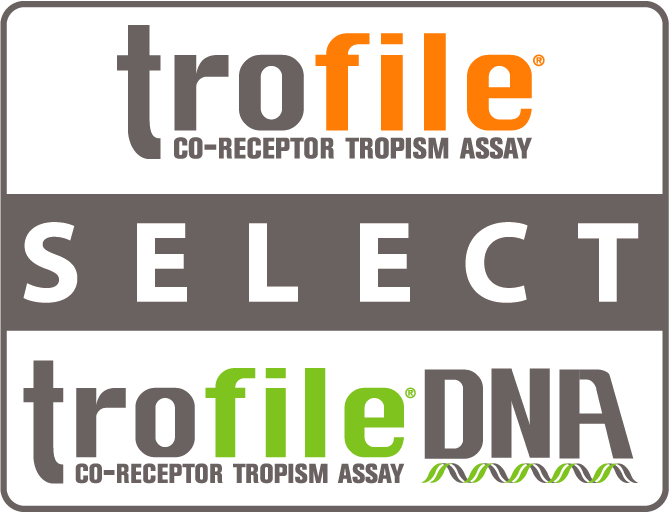More than 100,000 samples have been tested using Monogram’s Trofile® assays. All trials of coreceptor antagonists have used Trofile in their clinical development. Trofile has been shown to be accurate, precise, sensitive, reproducible, and robust in the measurement of HIV-1 coreceptor tropism.
The current US Department of Health and Human Services (DHHS) and the Infectious Diseases Society of America (IDSA) guidelines recommend that a coreceptor tropism test be performed whenever the use of a CCR5 inhibitor is being considered.1,2 Coreceptor tropism testing might also be considered for patients who exhibit virologic failure on a CCR5 inhibitor.1



 R5-tropic: Viruses or virus populations that can use only the CCR5 chemokine coreceptor to infect CD4+ cells.
R5-tropic: Viruses or virus populations that can use only the CCR5 chemokine coreceptor to infect CD4+ cells. X4-tropic: Viruses or virus populations that can use only the CXCR4 chemokine coreceptor to infect CD4+ cells.
X4-tropic: Viruses or virus populations that can use only the CXCR4 chemokine coreceptor to infect CD4+ cells. Dual (D)-tropic: Viruses or virus populations that can use either the CCR5 or CXCR4 coreceptors to infect CD4+ cells.
Dual (D)-tropic: Viruses or virus populations that can use either the CCR5 or CXCR4 coreceptors to infect CD4+ cells.

